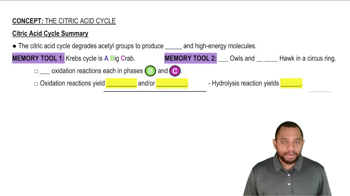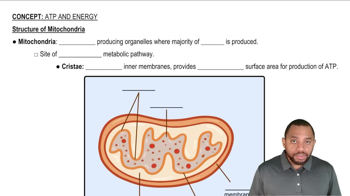Here are the essential concepts you must grasp in order to answer the question correctly.
Citric Acid Cycle
The citric acid cycle, also known as the Krebs cycle or TCA cycle, is a series of chemical reactions used by all aerobic organisms to generate energy. It involves the oxidation of acetyl-CoA derived from carbohydrates, fats, and proteins into carbon dioxide and water, while producing ATP, NADH, and FADH2, which are crucial for cellular energy.
Recommended video:
Citric Acid Cycle Summary Concept 12
Mitochondria
Mitochondria are membrane-bound organelles found in the cytoplasm of eukaryotic cells, often referred to as the 'powerhouses' of the cell. They are the primary site for the citric acid cycle, where the cycle occurs in the mitochondrial matrix, allowing for efficient energy production through aerobic respiration.
Recommended video:
Structure of Mitochondria Concept 1
Aerobic Respiration
Aerobic respiration is a metabolic process that requires oxygen to convert biochemical energy from nutrients into ATP. The citric acid cycle is a key component of this process, as it not only produces energy carriers but also provides intermediates for various biosynthetic pathways, highlighting its importance in cellular metabolism.
Recommended video:
Aerobic Respiration Summary Concept 1
 Verified step by step guidance
Verified step by step guidance Verified video answer for a similar problem:
Verified video answer for a similar problem:



 1:32m
1:32m